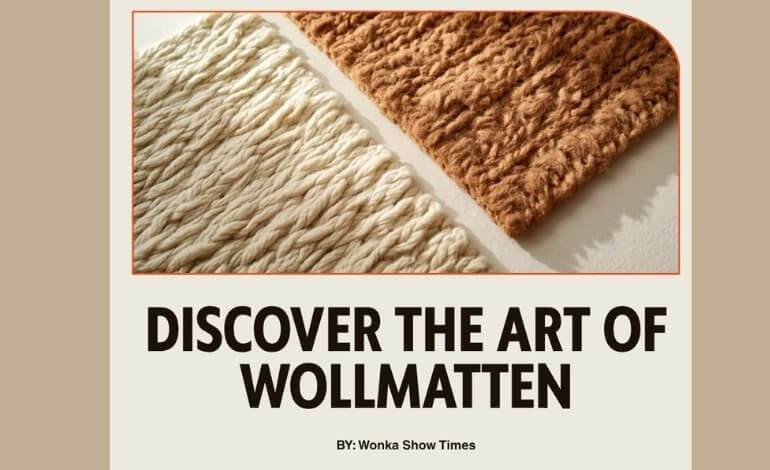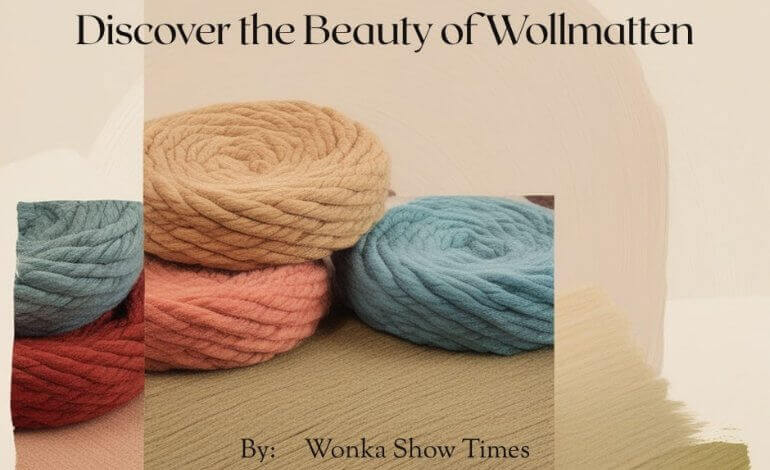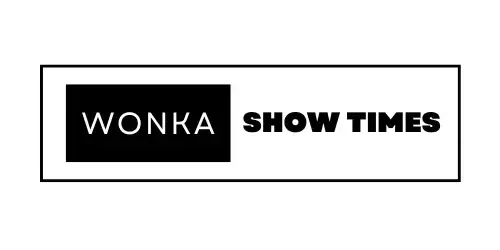
Wollmatten: where to buy it, history, uses, and all about it 2025
In a world where people are increasingly drawn toward sustainable and eco-conscious living, materials like wollmatten are quietly taking center stage. This term, though unfamiliar to many, represents a powerful and natural solution that combines functionality, comfort, and environmental responsibility. At Wonka Show Times, we aim to highlight innovations that matter—especially those that impact how we build, insulate, and live within our spaces. One such innovation is wollmatten.
Wollmatten, or wool mats, are gaining attention across industries ranging from construction and insulation to interior design and health. Whether you’re a homeowner looking to improve insulation or a designer seeking natural materials, understanding Woolen rugs can be a game-changer.
What are Wollmatten?
Wollmatten, derived from the German words for “wool mats,” are sheets or panels made primarily from sheep’s wool. These mats are crafted for a variety of applications, most commonly as eco-friendly insulation and acoustic panels. The use of wool in construction isn’t new, but recent interest in green building materials has brought Woolen rugs back into the spotlight with renewed enthusiasm.
Unlike synthetic materials, Woolen rugs is renewable, biodegradable, and safe for human health. They serve as a smart alternative to fiberglass or plastic-based insulation while offering numerous additional benefits.
The Story Behind Wollmatten
Woolen rugs has a long and fascinating history that goes back hundreds of years. They first appeared in areas famous for wool, made by skilled artisans who knew exactly how to work with the material.
In medieval Europe, these wool mats were used mainly to keep homes warm and cozy. As trade grew, so did their popularity crossing borders and inspiring new styles and techniques in different cultures.
During the 19th century, industrialization brought modern weaving machines, which made production faster but also put traditional craftsmanship at risk. Still, many artisans held onto old methods, keeping the original quality and beauty alive.
Today, people value Woolen rugs not just for how they look or feel, but for the deep history behind them. Each mat carries a legacy—passed down through generations—making them more than just home decor. They’re living pieces of heritage.
Why Wool? The Science Behind Wollmatten
Sheep’s wool is a naturally engineered material with built-in benefits that synthetic fibers struggle to match. When transformed into Woolen rugs, wool retains its valuable qualities and becomes an ideal choice for various environments.
Here’s why wool excels:
Thermal insulation:
Wool fibers trap air within their natural crimp, creating a highly efficient thermal barrier.
Moisture regulation:
Wool can absorb moisture without feeling wet, helping regulate indoor humidity.
Sound absorption:
Its dense, fibrous structure effectively reduces noise pollution and echoes.
Air purification:
Wool has the unique ability to bind with harmful indoor air pollutants like formaldehyde.
Flame resistance:
Naturally fire-retardant, wool offers a safer option for insulation and design.
These properties make wollmatten a practical and eco-friendly solution for modern buildings and homes.
Common Uses of Wollmatten
Woolen rugs have found their way into several industries due to their adaptability and performance. Below are some of the most popular applications.
Home insulation
Woolen rugs are widely used as thermal insulation in walls, ceilings, and floors. Unlike fiberglass, they are safe to touch, easy to install, and do not release harmful fibers into the air. They also last longer than many synthetic alternatives.
Acoustic panels
Thanks to their excellent sound absorption qualities, Woolen rugs are commonly used in music studios, offices, and even homes. They are effective in reducing noise and improving room acoustics without the need for synthetic foams.
Interior decoration
Wool mats are not just functional—they’re also aesthetically pleasing. Designers use Woolen rugs as wall coverings or decorative panels to add warmth and texture to spaces while enhancing indoor air quality.
Children’s spaces and wellness centers
Due to their hypoallergenic properties, wool mattresses are safe for children’s rooms, nurseries, and even meditation spaces. Their softness and warmth make them ideal for environments that prioritize comfort and health.
Yoga and natural mats
Some wellness brands are also using Woolen rugs as yoga mats or meditation pads. Their softness, breathability, and natural composition offer a grounding, toxin-free experience.
Environmental Benefits of Woolen Rugs
Sustainability is at the heart of why more people are turning to Woolen rugs. Their environmental advantages are significant.
Renewable resource
Sheep produce wool every year, making it a consistently renewable resource. Unlike petrochemical-based products, it doesn’t rely on depleting natural reserves.
Biodegradable
When disposed of, Woolen rugs breaks down naturally without polluting the soil or water systems. This helps reduce landfill waste and the long-term environmental impact of building materials.
Low energy production
Wool processing uses far less energy than producing plastic or synthetic insulation. This means a lower carbon footprint during manufacturing.
Chemical-free
Many insulation products rely on additives and flame retardants. Woolen rugs , on the other hand, provide performance without the need for harmful chemicals.
Supports ethical farming
Sourcing from local farms ensures animal welfare, supports rural economies, and keeps supply chains short and transparent.

Comparing Wollmatten to Traditional Insulation
Let’s break down the advantages of Woolen rugs compared to standard insulation materials.
Material:
- Wollmatten – Natural sheep wool
- Fiberglass – Synthetic glass fibers
- Foam boards – Plastic-based materials
Safety:
- Wollmatten – Skin-safe, chemical-free
- Fiberglass – Can irritate skin and lungs
- Foam boards – Often toxic when burned
Moisture control:
- Wollmatten – Excellent regulation and breathable
- Fiberglass Susceptible to mold
- Foam boards – Moisture-resistant but non-breathable
Longevity:
- Wollmatten – Long-lasting and durable
- Fiberglass – Breaks down over time
- Foam boards – Varies depending on quality
Environmental impact:
- Wollmatten – Biodegradable and renewable
- Fiberglass – Energy-intensive to produce
- Foam boards – Non-biodegradable and petroleum-based
Installation and Maintenance
Woolen rugs are relatively easy to install, especially for those with basic DIY skills. They can be cut to fit and shaped around corners and obstacles without breaking or releasing harmful particles.
Installation tips:
- Measure accurately and cut cleanly using a sharp blade
- Install snugly without compressing the wool too tightly
- Use natural vapor barriers when needed, depending on your climate
- Secure using staples, frames, or eco-friendly adhesives
Maintenance is simple. Because of wool’s natural resistance to pests and mold, wool mattresses don’t require chemical treatments. A quick visual check once a year is usually enough.
Common Myths About Woolen Rugs
As with any emerging trend, Woolen rugs have a few misconceptions attached to it.
Myth 1: Wool smells bad
Truth: Commercially produced Woolen rugs are thoroughly cleaned and processed. Any sheepy smell is removed before installation.
Myth 2: Moths will destroy it
Truth: Wool used in Woolen rugs is often treated with natural moth repellents or encased within building materials, making infestations unlikely.
Myth 3: It’s too expensive
Truth: While the initial cost may be higher than synthetic options, the long-term savings in energy, air quality, and durability make it a wise investment.
Who Should Consider Using this ?
Eco-conscious homeowners
If you’re designing or renovating a sustainable home, Woolen rugs are a natural fit. Their energy-saving and air-purifying properties enhance green building designs.
Architects and interior designers
Professionals in the building and design industries can use Woolen rugs as both a practical and stylistic element in homes, offices, and commercial spaces.
Parents and health-conscious individuals
For families prioritizing safety and clean air, Woolen rugs offer a chemical-free, hypoallergenic alternative to common insulation and decor.
Tiny home and van life communities
The lightweight, efficient, and flexible nature of Woolen rugs makes them ideal for use in small, mobile living environments.
The Future of Woolen Rugs
The growing interest in natural materials, coupled with a stronger focus on sustainable architecture, points to a bright future for Woolen rugs . As building regulations increasingly favor eco-friendly options and consumers demand transparency, natural solutions like wool mats are set to become a staple in modern construction and design.
Innovations in textile engineering may soon make Woolen rugs even more versatile, with improvements in fire resistance, waterproofing, and multi-layer design on the horizon.
In addition, greater collaboration between shepherds, manufacturers, and architects can bring local wool into mainstream construction in a way that benefits both the economy and the environment.
Where to Buy Wollmatten Items
There are many great places to buy Woolen rug products if you want to bring the warmth of these beautiful things into your home.
A lot of local boutiques and specialty stores have a small selection of Woolen rug items. You can see and feel the quality for yourself when you visit these places.
There are also a lot of options on online marketplaces. Woolen rugs is often featured on websites that promote eco-friendly living, making it easy to look at them from the comfort of your own home.
Don’t forget to buy directly from artisans or brands that make only handcrafted goods. You can find unique designs on many of their own websites that you can’t find anywhere else.
Another great place to find unique sellers is on social media. If you follow hashtags that have to do with Woolen rugs, you might find limited-edition items or seasonal sales that you like.
Conclusion
Wollmatten may not be a mainstream term yet, but it represents a powerful step toward a more natural and sustainable future in building, design, and everyday living. At Wonka Show TimesF, we believe that innovations like this deserve the spotlight—not just because they are better for the planet, but because they can improve our daily lives in meaningful ways.
With its superior insulation, soundproofing, health benefits, and eco-credentials, wollmatt is more than just a wool mat—it is a lifestyle choice. One that embraces nature, comfort, and responsibility in equal measure.
As interest in greener living continues to rise, expect to see wollmatten featured more prominently in homes, workplaces, and public spaces. If you’re looking to invest in the future of building or simply want to live in a cleaner, cozier space, consider giving wollmatten a place in your environment.
For more updates on sustainable trends and innovations, keep reading Wonka Show Times, where we bridge the past and the future through information that matters today.





